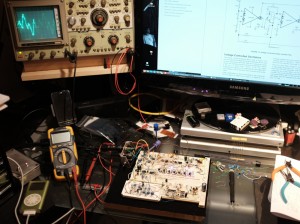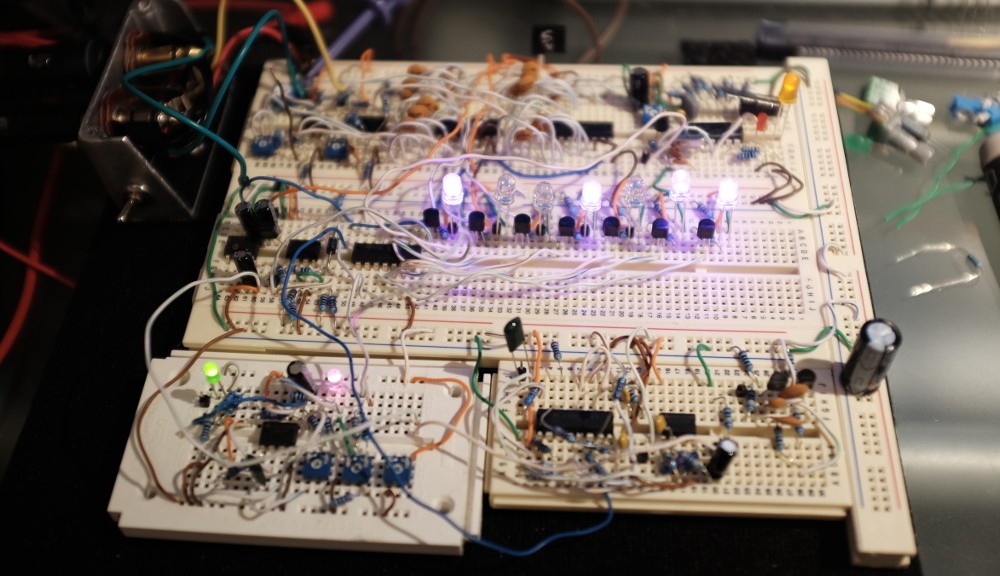It’s not like me to start with something simple like a three transistor distortion box — the world does not need another one of those. So I’ve been reading books like Don Lancaster’s Active Filter Cookbook and Texas Instruments Op Amps for Everyone (both apparently kinda classics in the field), though I suspect that latter title is a bit enthusiastic. I’m learning a lot, which is fun.
I haven’t owned a breadboard since the 1980s. I’ve been collecting ideas, parts, schematics and data sheets for integrated circuits a few months ago I didn’t know even existed. Analog Multipliers and Operational Transconductance Amplifiers are strange and interesting beasts.
I was building TTL and CMOS circuits and experimenting with 4000 (4004) and 8000 series (8008, 8080, Z80, 8085) microprocessors back in the late 70s and early 80s, my last few years of high school and beginnings of a EEE university education that I later abandoned for the arts (and just about anything that struck my fancy — a university education in California in the 80s was relatively cheap and a liberal arts education back then wasn’t such a crazy idea).
A guitar pedal is just one small box, but the necessary work to go from those early sketches to producing a batch of say, 20 pedals, is considerable. I need to come up with a good, solid schematic, breadboard and test it (and go through endless iterations until it actually works), design the circuit board, figure out the choice and location of the switches, pots, jacks, power supplies, enclosures and silkscreen or UV print the artwork, then figure out how to bulk source the parts at reasonable prices (electronics here in New Zealand are generally very expensive), well, pretty much everything. It’s obviously a one-step-at-a-time kinda thing — otherwise it’d be too daunting. I really respect those people who’ve been able to successfully do this on their own and succeed. And, I might add, to do it honestly, without stealing other peoples’ designs or starting a business based on clones of existing circuits.
Buying parts at unit retail prices is expensive in New Zealand. A 20MHz crystal from an online retailer costs NZ$0.42 ($0.36 ea. for 10+). If I buy it at a local retailer (there’s only one within 50km) it’s $5.60. Ugh. That’s an extreme example, but not that extreme. Your garden variety TL072 op amp is $1.43 ($1.10 ea. for10+), local retailer: $2.65 ($2.40 for10+). For capacitors and other discrete parts it also really, really pays to shop around.

With that in mind, at great expense I’ve amassed a suitable collection of parts for prototyping, managed to find a nice old four channel Iwatsu oscilloscope at a local pawn shop. I’ve built a couple of power supplies and been breadboarding various ideas with, well, a little bit of success. It can be frustrating. I spent many hours breadboarding a circuit, and when I finally managed to get it working I could hear somewhere in the amplified output the kind of sound I was aiming for, but that lovely sound was being completely overwhelmed by TERRIBLE SCREAMING. It’s not exactly back to the drawing board but figuring out where I went wrong is going to be tough.
